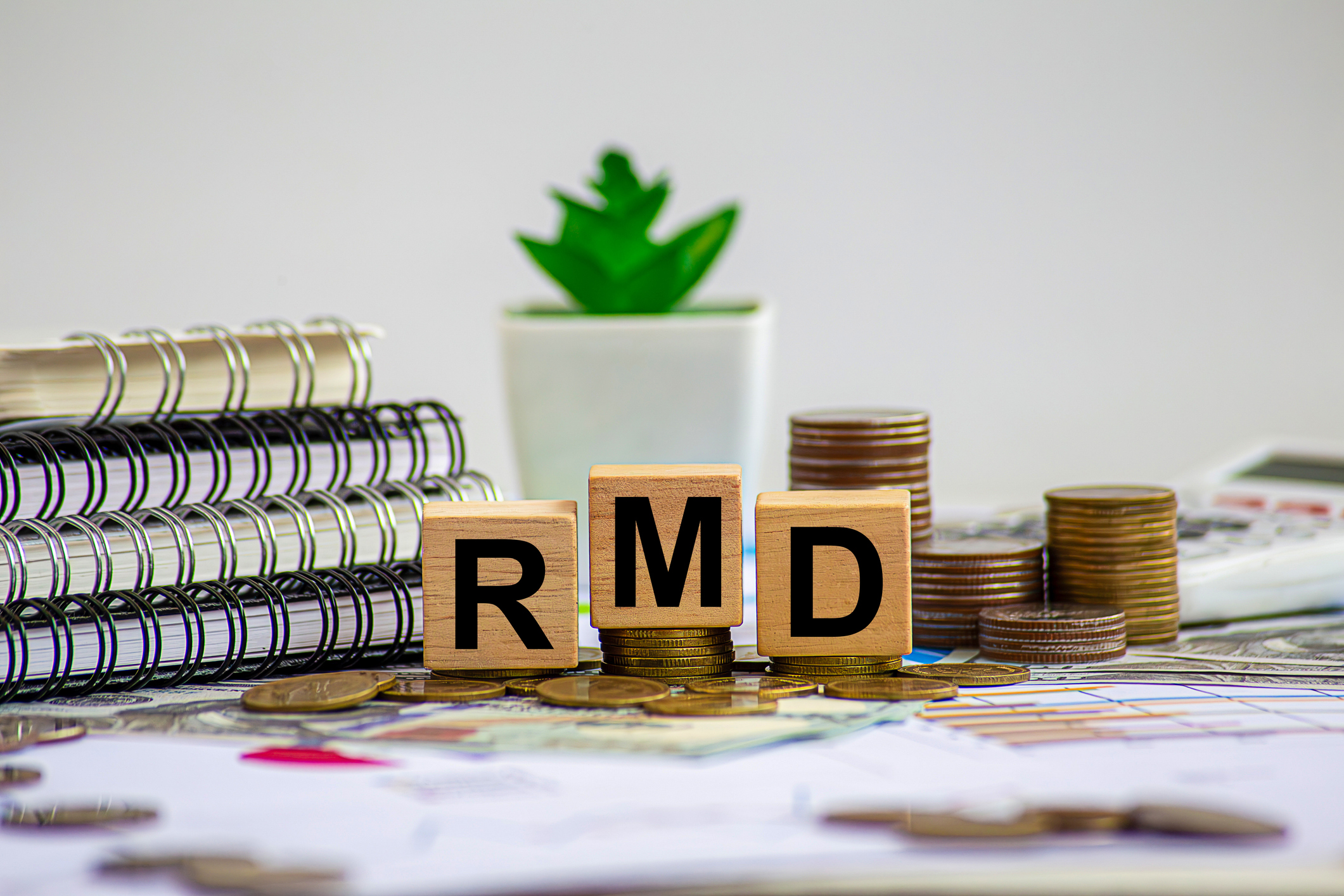Avoid Estimated Tax Payments in Retirement With RMD Withholding
If you don't need the money to live on, wait until December to take your RMD, and ask the sponsor to withhold a big chunk for the IRS.


Although you probably already filed a tax return this year, you might not be done with taxes quite yet.
You might still have to file and pay 2025 estimated taxes. (The next estimated tax payment due dates are June 16, September 15, then January 15, 2026.)
If you're still working, you probably don't need to worry about estimated tax payments. Withholding on your paychecks should ensure compliance with the tax system's pay-as-you-earn demands.
From just $107.88 $24.99 for Kiplinger Personal Finance
Become a smarter, better informed investor. Subscribe from just $107.88 $24.99, plus get up to 4 Special Issues

Sign up for Kiplinger’s Free Newsletters
Profit and prosper with the best of expert advice on investing, taxes, retirement, personal finance and more - straight to your e-mail.
Profit and prosper with the best of expert advice - straight to your e-mail.
But if you're retired, chances are you need to make estimated payments. You're supposed to figure out how much tax you'll owe for 2025, and send it to the IRS in four equal installments.
How estimated taxes work for retirees in 2025
Pay at least 90% of your 2025 liability or 100% of what you owed for 2024, and you'll have done your duty and be protected from an underpayment penalty.
That 100% of last year's taxes rises to 110% if your adjusted gross income (AGI) was more than $150,000 in the prior year.)
Not only can making those estimates be a pain, but writing those checks can disrupt your cash flow.
Many taxpayers simply divide the previous year's tax bill by four and send 25% on each payment date to wrap themselves in the "100% of last year's tax bill" exception.
Withholding options for Social Security, pensions and IRAs
But depending on the source of your retirement income, you might be able to satisfy the IRS via withholding from those payments.
Unlike withholding from paychecks, withholding from retirement income is almost always voluntary. (The exception: Non-IRA distributions that can be rolled over tax-free to an IRA or other eligible retirement plan are generally subject to mandatory 20% withholding.)
- If you want federal taxes withheld from Social Security benefits, you must file Form W-4V (the "V" is for voluntary) with the Social Security Administration.
- You can ask that 7%, 10%, 12% or 22% of each monthly benefit be carved off for the IRS.
- When it comes to pension or annuity payments, you control how much will be withheld by filing a Form W-4P with the payor.
For IRA distributions, the law requires that 10% be withheld for the IRS unless you tell the custodian otherwise. You can block withholding altogether or ask that as much as 100% be withheld.
The RMD withholding strategy: A hassle-free solution
Speaking of IRAs, a little-known opportunity might free you from withholding on multiple income sources and from the hassle of filing estimated taxes.
We call it the RMD solution.
Starting at age 73, retirees must take required minimum distributions (RMDs) from their traditional IRAs, based on the balance in the accounts on the previous December 31 divided by a factor provided by the IRS.
However, if you don't need the money to live on, wait until December to take your RMD and ask the sponsor to withhold a big chunk for the IRS, enough to cover your estimated tax on the IRA payout and all your other taxable income for the year.
Although estimated tax payments are considered made when you send in the checks — and must be paid as you receive your income during the year — amounts withheld from IRA distributions are considered paid evenly throughout the year, even if made in a lump-sum payment at year-end.
If your RMD is large enough to cover your entire tax bill, you can keep your cash safely ensconced in the IRA most of the year, avoid withholding on other sources of retirement income, skip quarterly estimated payments and still avoid the underpayment penalty.
Considerations for state income taxes
Note that RMD withholding might not work when it comes to state-level estimated taxes. Some IRA sponsors won't withhold state income taxes.
Check that point with your IRA sponsor.
Read More
- RMDs: What Every Retiree Should Know
- When Are Estimated Tax Payments Due?
- Retirement Income Tax and the IRS
Profit and prosper with the best of Kiplinger's advice on investing, taxes, retirement, personal finance and much more. Delivered daily. Enter your email in the box and click Sign Me Up.

-
 I'm want to give my 3 grandkids $5K each for Christmas.
I'm want to give my 3 grandkids $5K each for Christmas.You're comfortably retired and want to give your grandkids a big Christmas check, but their parents are worried they might spend it all. We ask the pros for help.
-
 If You're Not Doing Roth Conversions, You Need to Read This
If You're Not Doing Roth Conversions, You Need to Read ThisRoth conversions and other Roth strategies can be complex, but don't dismiss these tax planning tools outright. They could really work for you and your heirs.
-
 Could Traditional Retirement Expectations Be Killing Us?
Could Traditional Retirement Expectations Be Killing Us?A retirement psychologist makes the case: A fulfilling retirement begins with a blueprint for living, rather than simply the accumulation of a large nest egg.
-
 5 Types of Gifts the IRS Won’t Tax: Even If They’re Big
5 Types of Gifts the IRS Won’t Tax: Even If They’re BigGift Tax Several categories of gifts don’t count toward annual gift tax limits. Here's what you need to know.
-
 The 'Scrooge' Strategy: How to Turn Your Old Junk Into a Tax Deduction
The 'Scrooge' Strategy: How to Turn Your Old Junk Into a Tax DeductionTax Deductions We break down the IRS rules for non-cash charitable contributions. Plus, here's a handy checklist before you donate to charity this year.
-
 IRS Says You Made a Tax Return Mistake? A New Law Could Help You Fight Back
IRS Says You Made a Tax Return Mistake? A New Law Could Help You Fight BackTax Law Updated taxpayer protections change what the IRS must explain on error notices and how long you have to respond.
-
 Tax Refund Alert: House GOP Predicts 'Average' $1,000 Payouts in 2026
Tax Refund Alert: House GOP Predicts 'Average' $1,000 Payouts in 2026Tax Refunds Here's how the IRS tax refund outlook for 2026 is changing and what steps you can take now to prepare.
-
 Are You Middle-Class? Here's the Most Tax-Friendly State for Your Family
Are You Middle-Class? Here's the Most Tax-Friendly State for Your FamilyTax Tips We found the state with no income tax, low property tax bills and exemptions on groceries and medicine.
-
 Social Security Benefits Quiz : Do You Know the IRS Tax Rules?
Social Security Benefits Quiz : Do You Know the IRS Tax Rules?Quiz Social Security benefits often come with confusing IRS tax rules that can trip up financially savvy retirees and near-retirees.
-
 How Are I Bonds Taxed? 8 Common Situations to Know
How Are I Bonds Taxed? 8 Common Situations to KnowBonds Series I U.S. savings bonds are a popular investment, but the federal income tax consequences are anything but straightforward.
-
 New 2026 Tax Change Could Mean More for Your IRA and 401(k) Savings
New 2026 Tax Change Could Mean More for Your IRA and 401(k) SavingsRetirement Savings Here's how the new IRS inflation adjustments will increase the contribution limits for your 401(k) and IRA in the new year.